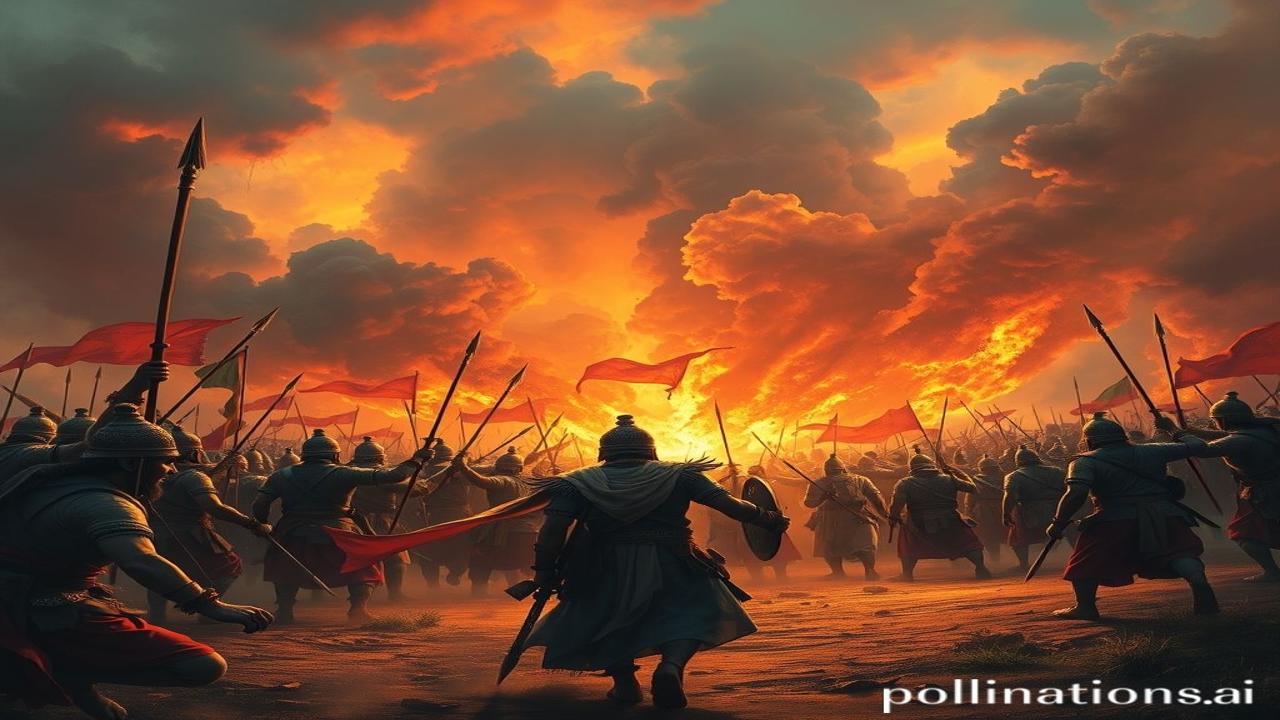Kalinga War: Jab Dilon Ke Tukde Hue Aur Ek Samrajya Badal Gaya
Kabhi kabhi sochti hoon, agar hawaa mein purane zakhmon ki boo hoti, toh Odisha ke retile maidaanon se kaisi gandh aati? Kya woh sirf mitti aur khoon ki smell hoti, ya usme dukh, pachtave aur ek naye subah ki umeed bhi shamil hoti? Kalinga War sirf ek yudh nahi tha; yeh toh Hindustan ki history mein ek aisa mod tha jahan ek raja ne talwar chhodkar dharam ka rasta chuna…
Kalinga War: What, When, Where, and Why?
The Kalinga War, bhaiyo aur behno, was a pivotal battle fought around 261 BCE. Think about it – that’s over 2200 years ago! It took place in Kalinga, a region roughly corresponding to modern-day Odisha. It was between the mighty Mauryan Empire, led by Emperor Ashoka, and the Kalinga kingdom. Now, why did Ashoka want Kalinga? Simple – Kalinga was strategically important for trade routes and military power. They were independent, prosperous, and Ashoka wanted to expand his empire. But little did he know, yeh expansion unki life hi badal dega.
Zameeni Sach: Log Aur Jeevan – Ashoka aur Kalinga ke Log
Imagine Kalinga before the war. Picture bustling marketplaces filled with vibrant textiles and exotic spices. Ma Rukmini ne aaj naye kapde pehne, kyunki mandir mein utsav tha. The farmers tilled their land, praying to their local deities for a good harvest. The warriors sharpened their swords, ready to defend their homeland. Kalinga was proud and independent.
Then came Ashoka. He was a young, ambitious emperor, eager to prove his power. His army was vast and well-trained. Drums beat like a thousand heartbeats, as the Mauryan army marched towards Kalinga. The Kalinga warriors fought bravely, but they were outnumbered and outmatched. Khoob khoon kharaba hua. The war was brutal. Lakhs of people died – soldiers and civilians alike. The rivers ran red with blood.
After the war, Ashoka walked through the battlefield. Cheekh-pukar, matam, aur haivaniyat ka manzar. He saw the devastation, the pain, the suffering. The sight shook him to his core. He saw widows weeping over their dead husbands, children orphaned, and entire villages destroyed. That day, something broke within him.
Dharohar Aur Pehchan: Kalinga War Aaj
The Kalinga War isn’t just a chapter in history books; it echoes in our values even today. Ashoka’s transformation, his embrace of Dharma (righteousness), and his focus on Ahimsa (non-violence) have deeply influenced Indian philosophy and culture. Ahimsa parmo dharma – this belief, promoted by Ashoka, is still very much alive in our society. You see it in our respect for all life, in our emphasis on peaceful resolution of conflicts, and in our commitment to social justice. Kalinga War is the foundation of “Bharatiyata”.
Mazedar Tathya Ya Bhram-Bhanjak
Log samajhte hain ki Ashoka Buddhist ban gaya toh weak ho gaya. Lekin asli sach yeh hai that he became a stronger ruler! His focus shifted from military conquest to moral conquest. He built hospitals for humans and animals, planted trees along roads, and promoted education. He sent missionaries to spread the message of peace and compassion. He showed the world that true strength lies not in violence but in righteousness. Ashoka’s edicts, inscribed on pillars and rocks throughout his empire, are a testament to his commitment to Dharma.
Drishya Aur Bhavnayein: Visualizing the Transformation
Imagine the scent of incense wafting through the air as Ashoka, clad in simple robes, meditates on the teachings of Buddha. Picture the smooth, cool touch of the stone pillars inscribed with his edicts. Hear the chanting of monks as they spread the message of peace throughout the empire. Feel the collective sigh of relief as the people of India experience an era of peace and prosperity. The transformation was complete.
Antim Vichar Ya Uddharan
The Kalinga War reminds us that even the most powerful empires can be transformed by compassion. It teaches us that true victory lies not in conquest but in the pursuit of righteousness. “Ahimsa vijayate dharmam” – Non-violence conquers righteousness. And the echo of Kalinga’s sacrifice and Ashoka’s awakening continues to resonate in our hearts, guiding us towards a more peaceful and just world.
